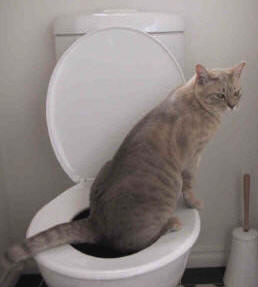Prevent Plumbing Problems: Never Flush Cat Poop Down Your Toilet - Professional Guidance
Prevent Plumbing Problems: Never Flush Cat Poop Down Your Toilet - Professional Guidance
Blog Article
This article which follows pertaining to Don’t flush cat feces down the toilet is amazingly compelling. Don't miss it.

Intro
As pet cat owners, it's necessary to bear in mind exactly how we get rid of our feline buddies' waste. While it may seem hassle-free to purge cat poop down the commode, this method can have damaging consequences for both the atmosphere and human health.
Alternatives to Flushing
Thankfully, there are much safer and more liable methods to deal with feline poop. Think about the complying with options:
1. Scoop and Dispose in Trash
One of the most usual approach of dealing with cat poop is to scoop it into a naturally degradable bag and toss it in the garbage. Make certain to utilize a devoted litter scoop and get rid of the waste immediately.
2. Usage Biodegradable Litter
Select naturally degradable feline clutter made from products such as corn or wheat. These clutters are eco-friendly and can be securely disposed of in the trash.
3. Bury in the Yard
If you have a yard, consider hiding pet cat waste in a marked location away from vegetable gardens and water resources. Make sure to dig deep enough to stop contamination of groundwater.
4. Mount a Pet Waste Disposal System
Buy an animal garbage disposal system specifically made for cat waste. These systems make use of enzymes to break down the waste, reducing smell and ecological effect.
Health Risks
In addition to ecological issues, purging pet cat waste can likewise pose wellness dangers to humans. Feline feces may contain Toxoplasma gondii, a bloodsucker that can trigger toxoplasmosis-- a potentially severe health problem, especially for pregnant females and individuals with damaged body immune systems.
Ecological Impact
Flushing pet cat poop presents dangerous pathogens and bloodsuckers into the water, positioning a considerable danger to water ecological communities. These contaminants can negatively impact aquatic life and compromise water quality.
Final thought
Responsible family pet ownership extends past offering food and shelter-- it likewise entails proper waste monitoring. By refraining from purging pet cat poop down the bathroom and going with alternate disposal methods, we can lessen our ecological footprint and shield human health.
Why Can’t I Flush Cat Poop?
It Spreads a Parasite
Cats are frequently infected with a parasite called toxoplasma gondii. The parasite causes an infection called toxoplasmosis. It is usually harmless to cats. The parasite only uses cat poop as a host for its eggs. Otherwise, the cat’s immune system usually keeps the infection at low enough levels to maintain its own health. But it does not stop the develop of eggs. These eggs are tiny and surprisingly tough. They may survive for a year before they begin to grow. But that’s the problem.
Our wastewater system is not designed to deal with toxoplasmosis eggs. Instead, most eggs will flush from your toilet into sewers and wastewater management plants. After the sewage is treated for many other harmful things in it, it is typically released into local rivers, lakes, or oceans. Here, the toxoplasmosis eggs can find new hosts, including starfish, crabs, otters, and many other wildlife. For many, this is a significant risk to their health. Toxoplasmosis can also end up infecting water sources that are important for agriculture, which means our deer, pigs, and sheep can get infected too.
Is There Risk to Humans?
There can be a risk to human life from flushing cat poop down the toilet. If you do so, the parasites from your cat’s poop can end up in shellfish, game animals, or livestock. If this meat is then served raw or undercooked, the people who eat it can get sick.
In fact, according to the CDC, 40 million people in the United States are infected with toxoplasma gondii. They get it from exposure to infected seafood, or from some kind of cat poop contamination, like drinking from a stream that is contaminated or touching anything that has come into contact with cat poop. That includes just cleaning a cat litter box.
Most people who get infected with these parasites will not develop any symptoms. However, for pregnant women or for those with compromised immune systems, the parasite can cause severe health problems.
How to Handle Cat Poop
The best way to handle cat poop is actually to clean the box more often. The eggs that the parasite sheds will not become active until one to five days after the cat poops. That means that if you clean daily, you’re much less likely to come into direct contact with infectious eggs.
That said, always dispose of cat poop in the garbage and not down the toilet. Wash your hands before and after you clean the litter box, and bring the bag of poop right outside to your garbage bins.
https://trenchlesssolutionsusa.com/why-cant-i-flush-cat-poop/

I discovered that piece of writing on Don’t flush cat feces down the toilet while looking around the search engines. Sharing is nice. One never knows, you may very well be helping someone out. I love reading our article about Can You Flush Cat Poop Down The Toilet?.
Visit Our Website Report this page